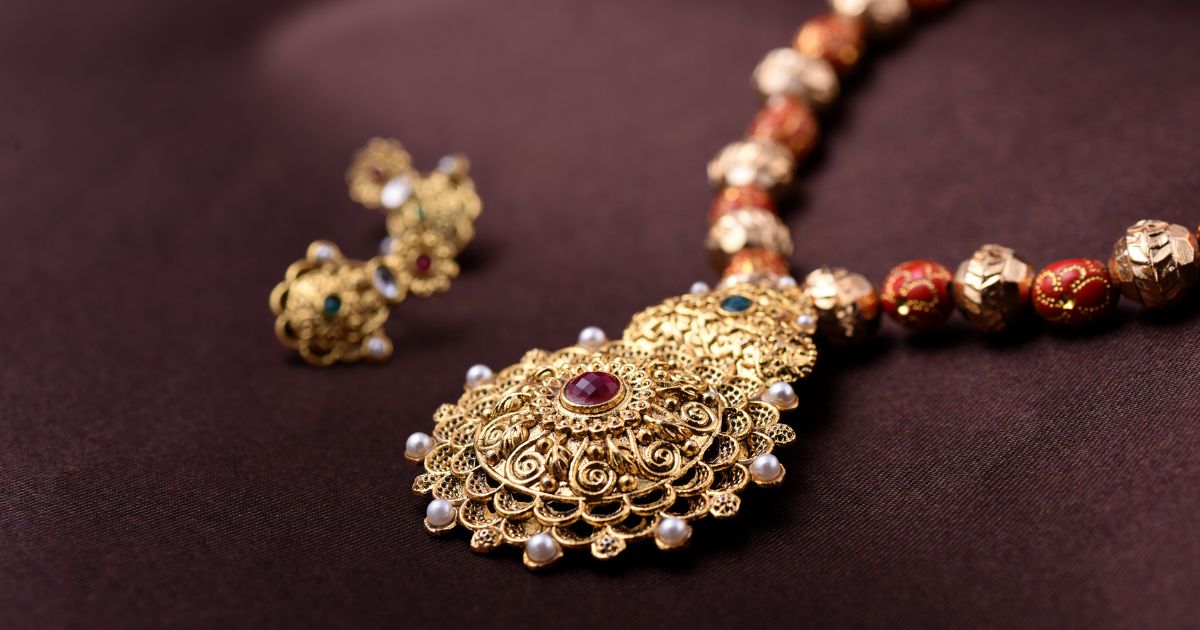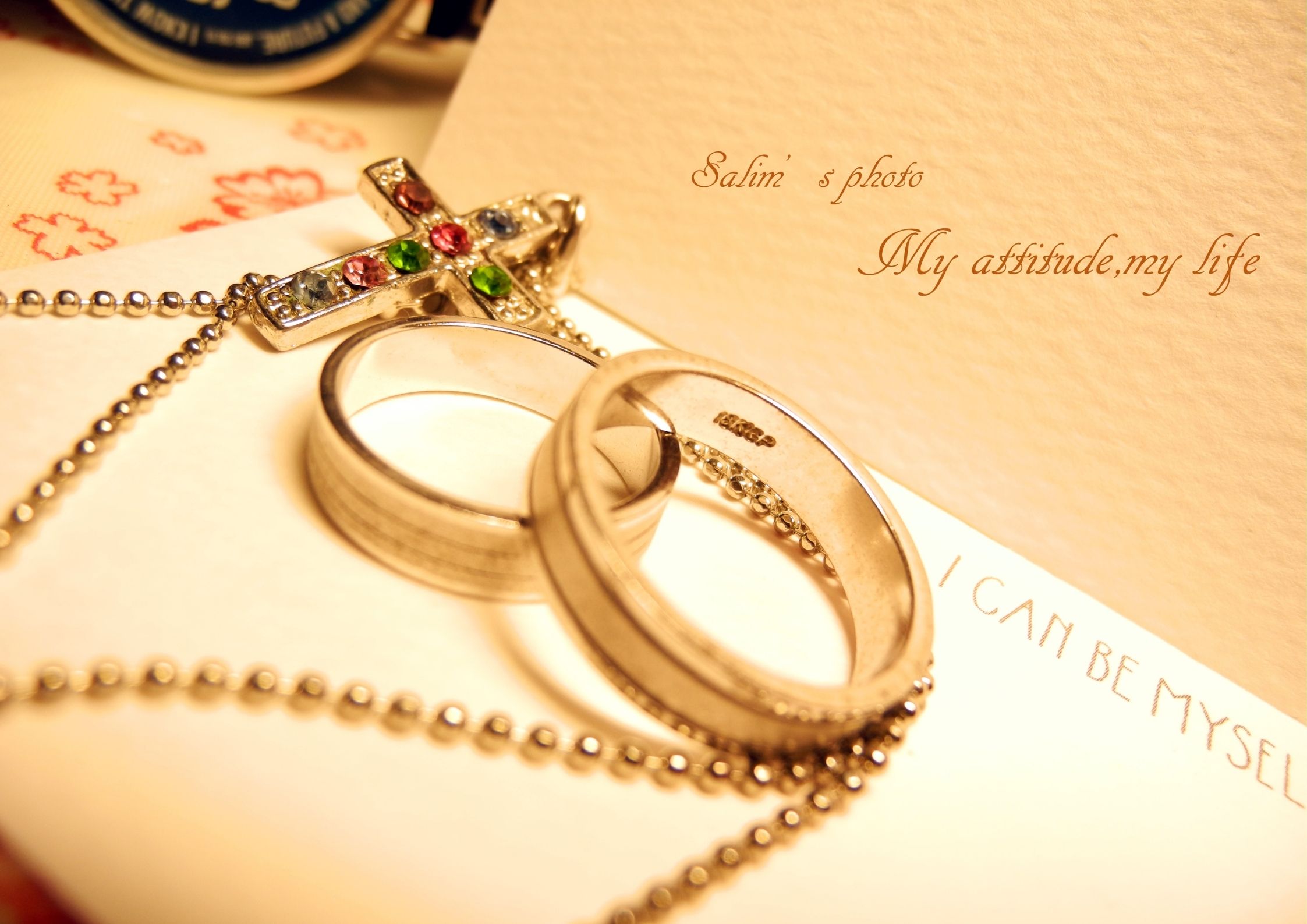Key takeaways
- There are software tools available for designing jewelry.
- These tools can help jewelry designers create and visualize their designs.
- Some popular software tools for jewelry design include RhinoGold, Matrix, and JewelCAD.
- These tools offer features such as 3D modeling, rendering, and virtual prototyping.
- They allow designers to experiment with different materials, shapes, and settings.
- Jewelry design software can also help with creating detailed technical drawings and specifications.
- Using these tools can save time and effort in the design process.
- They can also assist in creating more accurate and precise designs.
- Learning to use jewelry design software may require some training or practice.
- Overall, these software tools are a valuable resource for professional jewelry designers.
Did you know that the global jewelry market, which includes beads and accessories, is projected to reach a value of $292 billion by 2025? Enhancing your beauty with the right accessories requires skills. Dive into the captivating world of jewelry design with us as we explore the fundamental principles, creative processes, style variations, and custom creation in this intricate art form.
Discover the diverse types of beads and accessories used in jewelry design, including clay beads. Uncover the significance of balance, proportion, and harmony in crafting exquisite fine jewelry pieces while delving into diverse design elements such as shape, color, texture, beads, and clay. Explore different types of fine jewelry and their unique characteristics.
Discover the step-by-step process of clay jewelry making, alongside an introduction to essential tools and techniques for beginners. Learn about the different types of clay used in this creative process. From vintage elegance to modern minimalism, we’ll unravel various types of fine jewelry style variations and provide tips on infusing personal flair into your fine jewelry designs.
Join us on this journey through the realm of custom creation where we unveil the process of bringing unique visions to life while embracing the advantages of personalized and exclusive jewelry. Explore the different types of personalized and exclusive jewelry that we offer.
Exploring Jewelry Types
Necklace Ideas
There are several styles to consider. From the trendy choker to elegant pendants, and bold statement necklaces, each style in the jewelry design process offers a unique look. Whether you’re interested in learning more about the jewelry design certificate or exploring different types of jewelry, there are endless possibilities to create your perfect accessory. Chains and various gemstones are commonly used materials in necklace designs, offering a wide range of types.
Necklace length is crucial in the jewellery design process, as it can significantly impact how the piece complements an outfit. Whether you are a professional jewelry designer or pursuing a jewelry design certificate, understanding the importance of necklace length is essential.
For instance, in the jewelry design process, shorter necklaces work well with high-necked tops while longer ones pair nicely with lower-cut or scoop-neck attire. If you’re interested in pursuing a jewelry design certificate, understanding how different necklace lengths complement various necklines is an essential skill to develop. When selecting a necklace, consider your outfit’s neckline and the overall style you want to achieve.
Ring Inspirations
Rings come in various designs such as classic solitaires, dazzling halo rings, or timeless eternity bands. Different types of settings like prong, bezel, or pave setting offer diverse looks for different tastes. The choice of metals also plays a significant role in ring design; from traditional gold and silver to modern titanium or platinum.
Choosing the right ring size is essential for comfort and wearability. You can measure your finger using online guides or visit a jeweler for accurate sizing. Gemstones add personality to rings; whether it’s a birthstone that holds personal significance or a sparkling diamond symbolizing eternal love.
Earring Concepts
Exploring different earring styles opens up endless possibilities – from subtle studs perfect for everyday wear to eye-catching dangles suitable for special occasions. Beads and wirework techniques allow for creating unique designs that reflect individuality.
Selecting earrings that complement face shape and hairstyle is key when making choices about this accessory type. For example, long dangle earrings can elongate round faces while hoops can add softness to angular face shapes.
Bracelet Styles
Bracelets come in varied styles including sleek bangles, adjustable cuffs, and playful charm bracelets offering personalized touches through meaningful charms attached on them. Materials such as metals (gold, silver) and leather contribute vastly towards creating distinctive bracelet designs that suit different preferences. Comfort should be considered when designing bracelets; ensuring they’re adjustable allows them to fit various wrist sizes comfortably without feeling too tight or loose.
By covering these jewelry types comprehensively – necklaces encompassing chokers & pendants; rings featuring solitaire & eternity bands; earrings including studs & dangles; along with bracelets spanning bangles & cuffs – we’ve explored diverse options available within jewelry design.
Specialized Jewelry Techniques
Gemstone Designs
Gemstones are a crucial element in jewelry design, often serving as the focal point of a piece. Popular gemstone cuts, like round, oval, and pear shapes, contribute to the overall appeal of jewelry. Each gemstone color holds significance; for instance, red symbolizes passion and energy while blue represents tranquility and wisdom. Incorporating these meanings into designs can enhance their emotional impact.
Setting gemstones securely is vital to ensure their longevity in jewelry pieces. Techniques such as prong setting or bezel setting provide both security and aesthetic appeal. For example, using prongs to hold a gemstone allows more light to enter it, enhancing its sparkle.
Diamond Crafting
When considering diamonds for jewelry design, understanding the 4Cs (cut, clarity, color, carat weight) is essential. The cut determines how well a diamond reflects light; clarity measures its purity; color refers to its tint; carat weight indicates size. Ethical considerations when sourcing diamonds are also important – ensuring they are conflict-free promotes responsible practices within the industry.
Incorporating diamonds into jewelry designs requires precision and skill due to their high value and delicate nature. Prong settings or pavé styles are popular techniques that highlight the brilliance of diamonds without overpowering other elements in the design.
Beading and Wire Methods
Beading techniques encompass stringing beads together with threads or wires using various weaving patterns or knotting methods. These techniques allow for endless possibilities in creating intricate patterns through different bead sizes, shapes, colors, and textures.
Wirework methods involve manipulating wire to create structural components or decorative elements within jewelry pieces. Wire wrapping involves encasing stones with wire loops while wire sculpting entails shaping wires into intricate designs directly on metal surfaces.
Combining beads with wire offers diverse opportunities for creativity – from adding beaded embellishments onto wire-formed structures to integrating wire components within beaded designs.
Gold and Silver Crafting
Gold Design Inspiration
Gold is a versatile metal used in jewelry design due to its durability and ability to hold intricate details. It comes in various colors such as yellow, white, and rose gold, each offering unique aesthetics for designers to work with. For example, yellow gold exudes a classic warmth while white gold provides a modern touch. The different karat options available, including 14k and 18k, allow for flexibility in creating jewelry pieces that cater to varying preferences.
Exploring pieces from different eras can be enlightening. For instance, ancient Egyptian jewelry showcases the use of intricate filigree work and symbolic motifs. On the other hand, Art Deco jewelry from the 1920s features geometric shapes and vibrant gemstones set in bold designs. These historical examples demonstrate how gold’s versatility has been utilized across cultures and time periods.
Silver Crafting Methods
Working with silver involves various techniques such as soldering – joining two metal components using heat – which allows artisans to create complex designs by connecting individual elements together seamlessly. Furthermore,** polishing silver**, an essential step in crafting silver jewelry ensures a lustrous finish that enhances its overall appearance.
One of the advantages of using silver in jewelry making is its affordability compared to other precious metals like gold or platinum while still offering timeless elegance. Moreover,** maintaining silver jewelry’s shine** requires simple care routines like regular cleaning with a polishing cloth or mild soap solution followed by proper storage away from moisture and air exposure.
Engagement and Wedding Jewelry
Current trends in ring design are constantly evolving, with new styles gaining popularity. For instance, stackable rings have become a hit among modern brides, offering versatility and the chance to mix and match different bands. Geometric shapes like hexagons or asymmetrical designs are also making waves in the world of engagement rings. These contemporary designs provide a fresh take on traditional jewelry.
Rose gold, and mixed metal combinations. Gemstones such as sapphires, morganite, and colored diamonds are being embraced for their unique hues that add an extra element of personalization to ring designs. In terms of settings, minimalist bezel settings and vintage-inspired halo settings have gained traction due to their timeless appeal.
Inspiration from celebrity engagement rings is another significant trend shaping modern jewelry design. Celebrities often set the tone for upcoming trends through their extravagant and one-of-a-kind engagement rings. Fashion runways play a crucial role in influencing jewelry trends by showcasing innovative and avant-garde pieces that inspire designers worldwide.
The Art of Diamond Selection
Choosing Quality Diamonds
There are several factors to consider. The 4Cs – cut, color, clarity, and carat weight – play a crucial role in determining the overall quality and value of a diamond. For instance, the cut refers to how well a diamond’s facets interact with light, affecting its brilliance and fire. Meanwhile, color grades range from D (colorless) to Z (light yellow or brown), impacting the visual appearance of the stone. Clarity assesses the presence of internal and external flaws within the diamond known as inclusions and blemishes respectively.
Understanding diamond certifications is essential for ensuring authenticity and quality. Organizations like GIA (Gemological Institute of America) or AGS (American Gem Society) provide detailed assessments of diamonds’ characteristics based on strict grading standards. These certifications offer buyers peace of mind by verifying that they are getting what they pay for.
Identifying common diamond flaws is also important when selecting stones for jewelry design projects. For example, black carbon spots can significantly reduce a diamond’s value due to their negative impact on transparency and sparkle.
Diamond Types for Design
When creating jewelry pieces such as engagement rings or necklaces, it’s vital to understand different types of diamonds available in the market. Round brilliant diamonds are popular due to their classic appeal and exceptional sparkle resulting from precise cutting techniques that maximize light return.
Princess cut diamonds feature sharp corners which create a modern aesthetic while maintaining impressive brilliance similar to round cuts.
For those seeking unconventional designs, fancy colored diamonds present an exciting opportunity for creativity in jewelry design projects. These unique stones come in various hues such as pink, blue, yellow, or green—offering endless possibilities for crafting one-of-a-kind pieces that stand out from traditional white diamond designs.
Considerations when selecting diamonds based on shape include personal preferences; some individuals may favor oval shapes over emerald cuts due to their elongated silhouette which creates an illusion of greater size when viewed from above.
Jewelry Design Software and Tools
Design Software Models
Jewelry design has evolved with the use of CAD (Computer-Aided Design) software, enabling designers to create intricate 3D models with precision. These programs offer a wide range of benefits, such as the ability to visualize designs from multiple angles and make adjustments before production.
For example, RhinoGold is a popular CAD program known for its user-friendly interface and specialized tools for jewelry design. Another example is Matrix, which provides advanced features like gemstone settings and organic modeling.
Utilizing CAD software in jewelry design allows designers to experiment with various shapes, textures, and materials without physically creating each prototype. This not only saves time but also reduces material costs by minimizing errors in the initial stages of design. The efficiency gained through digital modeling enables designers to explore more creative possibilities while ensuring accuracy in their creations.
Essential Tools
Every jewelry designer relies on a set of essential tools that are indispensable for crafting unique pieces. Pliers play a crucial role in shaping metal wires and closing jump rings securely. Cutters are used to precisely snip wires or metal sheets, while files help smoothen rough edges or refine details on metal surfaces.
Specialty tools cater to specific techniques involved in jewelry making, such as stone setting or engraving. For instance, bezel pushers are designed specifically for securing gemstones within their settings, ensuring they sit snugly without any risk of dislodgment. Engraving tools come in various tips and sizes suitable for creating intricate patterns or personalizing pieces with names or messages.
Repair, Restoration, and Unique Gifts
Jewelry Repair Services
Professional jewelry repair is crucial for maintaining the quality and longevity of your beloved pieces. From resizing rings to soldering broken chains or restringing pearls, skilled jewelers can handle a wide array of repairs. These services help ensure that your jewelry remains in pristine condition for years to come.
When seeking reputable jewelry repair services, it’s essential to consider factors such as experience, customer reviews, and certifications. Look for jewelers who are knowledgeable about different types of jewelry and offer comprehensive repair solutions. By choosing a trusted professional, you can rest assured that your precious items will be handled with care.
Restoration Techniques
Restoring antique or damaged jewelry requires delicate techniques to bring these pieces back to their former glory. Cleaning and polishing methods vary depending on the specific materials used in the piece – whether it’s gold, silver, diamonds, or other gemstones. Preservation experts possess the expertise needed to clean each type of material without causing damage.
Preserving historical value is paramount when restoring vintage pieces. Experts understand how to maintain the authenticity of these items while making necessary repairs. By working with professionals well-versed in historical jewelry restoration techniques, you can ensure that the unique stories behind these pieces remain intact.
Unique Design Gifts
Gifting personalized jewelry designs offers a meaningful way to celebrate special occasions and create lasting memories. Options like initial pendants or birthstone bracelets allow you to tailor gifts based on recipients’ preferences and personalities. Customizable designs provide an opportunity for creativity while adding sentimental value.
Selecting meaningful pieces involves considering factors such as personal style and significance. When gifting unique jewelry designs, think about what resonates with the recipient – whether it’s a symbol of friendship, love, or an important life milestone. Meaningful gifts reflect thoughtfulness and consideration for the individual’s tastes and preferences.
Educational Pathways in Jewelry Design
GIA Course Overview
The Gemological Institute of America (GIA) offers comprehensive educational programs in jewelry design and gemology. These programs cover various aspects, including diamond grading, colored gemstones, and jewelry design. Obtaining certifications from GIA can significantly enhance career prospects in the jewelry industry. Individuals with GIA certifications are highly sought after by employers due to the institute’s reputation for providing top-quality education.
GIA’s courses delve into the intricacies of jewelry design, equipping students with a deep understanding of different types of gemstones, precious metals, and manufacturing techniques. This knowledge is invaluable for individuals aspiring to pursue careers as professional jewelers or designers. Moreover, obtaining certifications from GIA demonstrates a commitment to excellence and professionalism within the field.
Study Options at GIA
Aspiring jewelry designers have the flexibility to choose from various study options offered by GIA, including on-campus and online programs. The specialized courses available cater to specific areas such as diamond grading, colored gemstones, or jewelry design itself. Students can opt for on-campus learning experiences where they benefit from hands-on training under the guidance of experienced instructors.
Moreover, testimonials from students who have completed programs at GIA highlight the institute’s effectiveness in imparting practical skills essential for success in the jewelry industry. These firsthand accounts provide valuable insights into how GIA’s educational offerings prepare individuals for fulfilling careers within this creative and intricate field.
Career Opportunities
The field of jewelry design presents diverse career paths encompassing roles such as bench jeweler, CAD designer (using computer-aided design software), or gemstone buyer. Each role offers unique opportunities for creativity and innovation while contributing to different stages of the jewelry production process – from ideation to final product creation.
Tips for building a successful career include networking within the industry, staying updated with current trends through continuous learning opportunities like workshops or seminars; showcasing one’s unique style through a portfolio; gaining experience through internships or apprenticeships; seeking mentorship from established professionals; considering entrepreneurship by starting a small business or boutique brand specializing in custom designs.
By following these tips along with acquiring relevant qualifications such as those offered by renowned institutions like GIA ensures that aspiring professionals are well-equipped to succeed in their chosen path within jewelry design.
Conclusion
You’ve now journeyed through the intricate world of jewelry design, uncovering a treasure trove of knowledge about various jewelry types, specialized techniques, materials, and even educational pathways. Whether you’re an aspiring jewelry designer or simply passionate about the artistry behind stunning adornments, this exploration has provided valuable insights into this glittering realm.
As you continue your own creative endeavors or seek out the perfect piece, remember that every exquisite design has a story to tell and a unique craftsmanship that sets it apart.
Now, armed with a deeper understanding of jewelry design, go forth and let your creativity sparkle. Whether you’re sketching out your first design or hunting for that show-stopping piece, may your journey be as enchanting as the jewels themselves.




